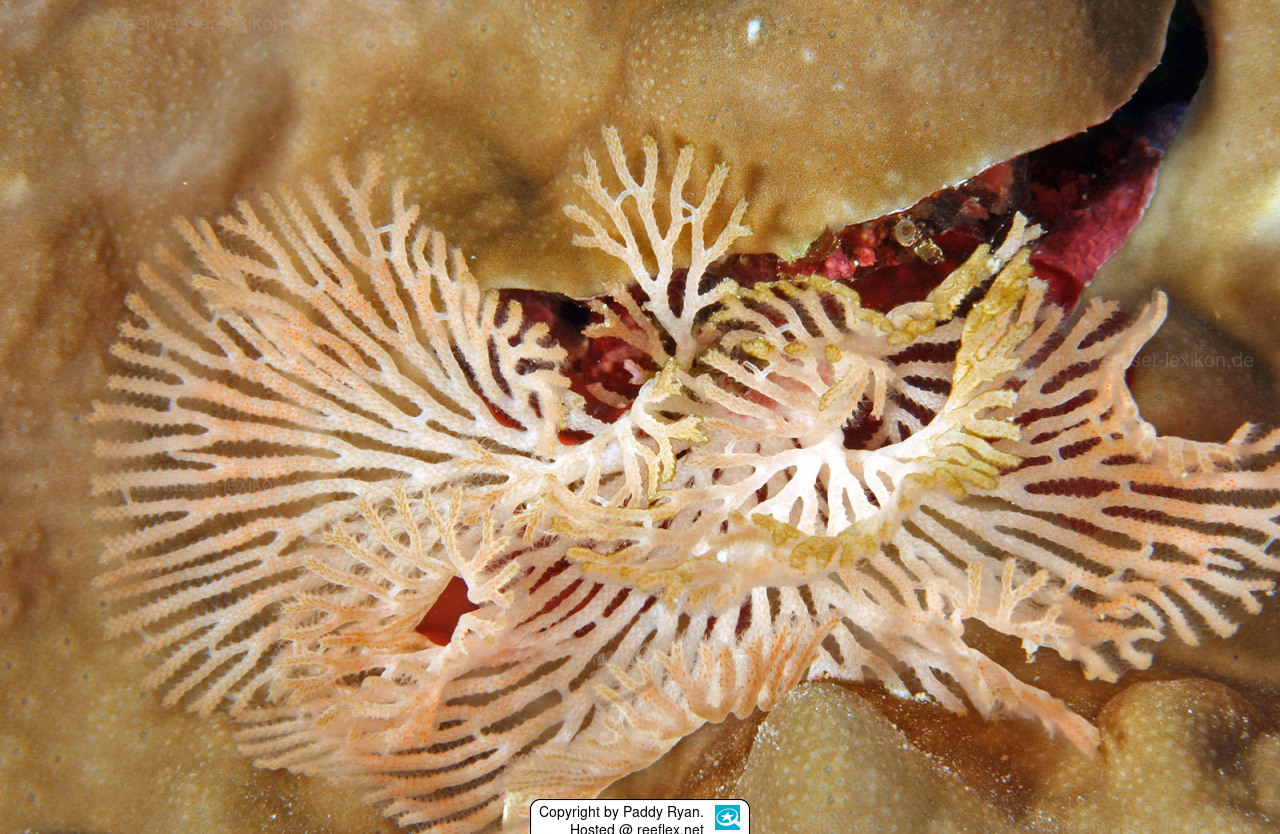Info
Reteporella graeffei (Kirchenpauer, 1869)
Bryozoans are multicellular animals that live in water. They are mostly microscopic, so that only the colonies are noticeable to the observer.
Reteporella graeffei belongs to the family Phidoloporidae, which can be most clearly distinguished from other bryozoans by its lace-like appearance. The delicate structure becomes dimensionally more complex with increasing size, with the larger colonies forming undulating rosettes with multiple layers of fan-like branches. The colony attaches to the substrate with a kenozooid (a zooid specialized as a holding element) and grows radially outward.
In larger colonies, the proximal end of the branches (closest to the anchor point) tends to be colorless, while the distal edge of the colony appears pinkish-orange.
Colony size appears to be highly variable and is likely due to age. Small colonies may reach only a few centimeters in diameter with one layer of twigs, while older colonies may form 7-8 cm diameter artfully layered twigs.
These bryozoans tend to be brittle as the tips break off easily. The lophores retract when touched. When the colony is relaxed, the protruding lophores give the colony a blurred appearance.
The most common reticulated bryozoans with which Reteporella graeffei might be confused are Margaretta triplex and a Triphyllozoon species. All may occur on the same piece of coral rubble.
Synonymised names:
Retepora producta Busk, 1884 · unaccepted (Subjective synonym)
Retihornera graeffei Kirchenpauer, 1869 · unaccepted
Bryozoans are multicellular animals that live in water. They are mostly microscopic, so that only the colonies are noticeable to the observer.
Reteporella graeffei belongs to the family Phidoloporidae, which can be most clearly distinguished from other bryozoans by its lace-like appearance. The delicate structure becomes dimensionally more complex with increasing size, with the larger colonies forming undulating rosettes with multiple layers of fan-like branches. The colony attaches to the substrate with a kenozooid (a zooid specialized as a holding element) and grows radially outward.
In larger colonies, the proximal end of the branches (closest to the anchor point) tends to be colorless, while the distal edge of the colony appears pinkish-orange.
Colony size appears to be highly variable and is likely due to age. Small colonies may reach only a few centimeters in diameter with one layer of twigs, while older colonies may form 7-8 cm diameter artfully layered twigs.
These bryozoans tend to be brittle as the tips break off easily. The lophores retract when touched. When the colony is relaxed, the protruding lophores give the colony a blurred appearance.
The most common reticulated bryozoans with which Reteporella graeffei might be confused are Margaretta triplex and a Triphyllozoon species. All may occur on the same piece of coral rubble.
Synonymised names:
Retepora producta Busk, 1884 · unaccepted (Subjective synonym)
Retihornera graeffei Kirchenpauer, 1869 · unaccepted







 Dr. Paddy Ryan, USA
Dr. Paddy Ryan, USA




